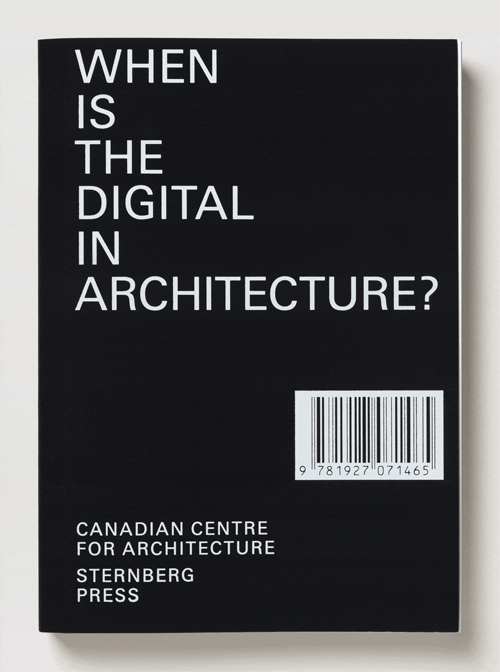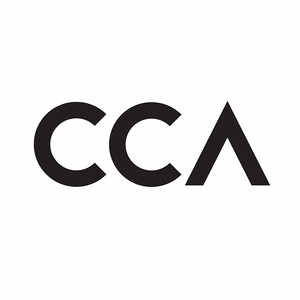When Is the Digital in Architecture?
Published by the Canadian Centre for Architecture and Sternberg Press
Edited by Andrew Goodhouse
With contributions by Stan Allen, Phil Bernstein, Nathalie Bredella, Mario Carpo, Wolfgang Ernst, Marco Frascari, Peter Galison, Orit Halpern, Greg Lynn, Antoine Picon, Molly Wright Steenson, Bernard Tschumi, Mark Wigley, and Andrew Witt
Designed by Studio Katja Gretzinger, Berlin
464 pages, English, ISBN 978-1-927071-46-5
Published in French as Quand le numérique marque-t-il l’architecture?, ISBN 978-1-927071-47-2
When is the digital in architecture? What are the conditions that led architects to integrate digital tools into their practices? Over the course of the Archaeology of the Digital research program, the Canadian Centre for Architecture (CCA) has collected the archival records of twenty-five projects realized between the late 1980s and the early 2000s in order to understand this moment as a point of origin for the digital. But if we take care to identify the digital as a condition that is made possible by the conceptual foundations of digital media and not necessarily by digital media itself, the boundaries of the digital moment—when it began and under what circumstances—become less clear.
There are eight million stories of the origins of the digital in architecture, and this book brings together fourteen of them in a chronology of responses to the question of when the digital is in architecture. The arguments address specific changes in ways of thinking about architecture, building, and cities, as well as the shifts in technology that resulted from these changes, marking both a capstone to Archaeology of the Digital and the beginning of an investigation of other beginnings of the digital in architecture.
Asking a question like When is the digital in architecture? can produce eight million stories in response, and eight million digressions and redirections that narrow in focus and change geographies, producing a Tristram Shandy of the digital as the CCA continues to build its digital archive and makes it increasingly accessible to researchers. If this novel of digressions is distributed across future research projects and extended with studies of new archival material, so much the better for the reader, in our opinion.
Join us in Berlin for a book launch at Spike, Rosa-Luxemburg-Straße 45, on June 15, at 7pm.
The CCA is an international research institution based on the fundamental premise that architecture is a public concern. It was founded in 1979 by Phyllis Lambert as a new type of cultural institution, with the specific aim of increasing public awareness of the role of architecture in contemporary society and promoting scholarly research in the field.
We produce research, exhibitions, publications, and a range of activities. We host scholars and provide access to our collection, which includes prints, drawings, photographs, and an extensive library, with a special emphasis on complete architectural archives.
This publication received the generous support of the Graham Foundation for Advanced Studies in the Fine Arts.


